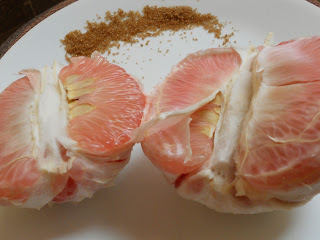Let me start by saying that this post isn't just for you but for your entire family. Research shows that when everyone is on board, it is easier to create wellness habits that last a lifetime.
So why 'discipline' at all in relation to health? Think about it... our entire day is a series of activities that have become second nature to us – we do them without even noticing.
Starting from brushing our teeth in the morning (notice how you always brush in the same order every day?) to accomplishing what there is to do either at home or office, our whole life is a series of daily habits, broken by maybe some weekly or monthly activities!
How did these habits come to be formed? You probably started out with something that had to be done on a regular basis, did that enough number of times for the process to be 'worn into your brain'. Every thought we think travels across nerve cells – doing something repeatedly creates pathways along the same neural channel until we reach a point where we are able to perform that task without even thinking. It's called ' Neuronal Plasticity' and this is how a habit or set of habits are formed.
Habits are easier made than broken. In fact, once a synaptic pathway has been created for an activity, it can be weakened by disuse but never really eliminated altogether – that's why habits like junk food bingeing, alcoholism and smoking can be resumed in the blink of an eye, almost unconsciously.
To create lasting wellness, you have to discipline yourself to create new habits. It involves planning and scheduling for new ways of thinking, buying, cooking, eating and exercising.
Firstly recognise the triggers for your unhealthy habits – mostly these would be negative thought patterns about yourself or your health. They could be stress-related. In fact, eating when emotionally charged results in an insidious circle... bingeing or indulging, feeling guilty about it and then telling yourself that “I'm a failure”, “I'm incapable”, “I’m worthless” or “I won't be accepted”.
This is usually followed by a resolve to do better next time but is forgotten in the face of the next temptation. Sometimes it’s tough to distinguish our normal, largely negative, thoughts from our innate sense of self (the latter is rarely expressed). We think that it's tough to control the way we think but the truth is that it, too, just takes practice. Create synaptic pathways for positive thinking first! This is crucial to the success of your initiative. You can't be half-hearted about this......it takes real commitment.
This article was published in 'Life in Adyar', March 23rd, 2013.
Develop
healthy eating habits one at a time, give yourself a week or two of
practice, then incorporate the next important change. So start
exercising daily, after maintaining that for 2 weeks, cut out the
junk food next – do that for 2 weeks and so on. If you build your
wellness like this, not only will you raise your chances of success,
you'll also have enough new activities to keep you occupied for the 3
– 6 months that it takes to imprint the new habits.
A ten-step route to build food discipline :
1] Your
tongue ‘remembers’ pleasurable eating experiences (high fat,
high sugar, high salt) and this, in part, triggers food cravings.
Giving into cravings regularly makes you dependent on these ‘quick
fixes’, in other words –you’re addicted (yep, just like a drug
or alcohol addict)
2] Do
you want to honour your tongue your whole life? Or will you start
honouring your body?
It has to last you a lifetime and what you choose to put into it
determines your long-term health......really.
3] Respect
your body – before you put anything in your mouth, ask yourself 4
questions – Am
I actually hungry or just thirsty?
Do I
have a craving, an emotional need or am I just bored? Will my body
thank me for eating this? Do I really want this?
And after answering these questions another good one to ask is –
What
are some healthy choices I can make instead?
4] Be
aware that even the aroma of tasty food can trigger a craving, not
just the sight of it so that you’re alert
to
an impending
craving
(and repeat step
3).
5] Talk
about your cravings, food addictions and unhealthy habits with
people you trust, tell your family about your new health routine so
that they’re on board. Be brave and say
“No thank you, I’m on a wellness program right now”, when
being tempted.
6] When
you’re being ribbed about ‘being on a diet’; go ahead, laugh
with them – and make healthy choices anyway. Be proud of yourself
and your commitment.
7] Stand
in front of yourself in the mirror – look carefully over each
physical feature, notice what negative things your mind is saying
about it. Notice any positive things your mind is saying about your
body. Consciously create positive statements about each part of your
body, start accepting and loving yourself, just as you are now. Do
this for at least 10 minutes a day; it will take less time with
practice.
8] Exercise-----
reduces stress and anxiety, improves your sense of control over your
body and life and serves as a distraction when a craving takes hold.
9] 'Meditation
is food for your soul, it satiates the hunger that is not satisfied
by food alone. And when your soul is fed, you have less need to give
into unhealthy temptations When
you directly experience the fullness of life, then you have less
need to attempt to fill the void with food.'
10] Relax, learn to laugh at yourself.
When you’re taking your weight loss efforts too seriously, you
experience pressure which only sets you up for quitting (failure
in a fitness regime is impossible – there’s never an END to
living healthily).














